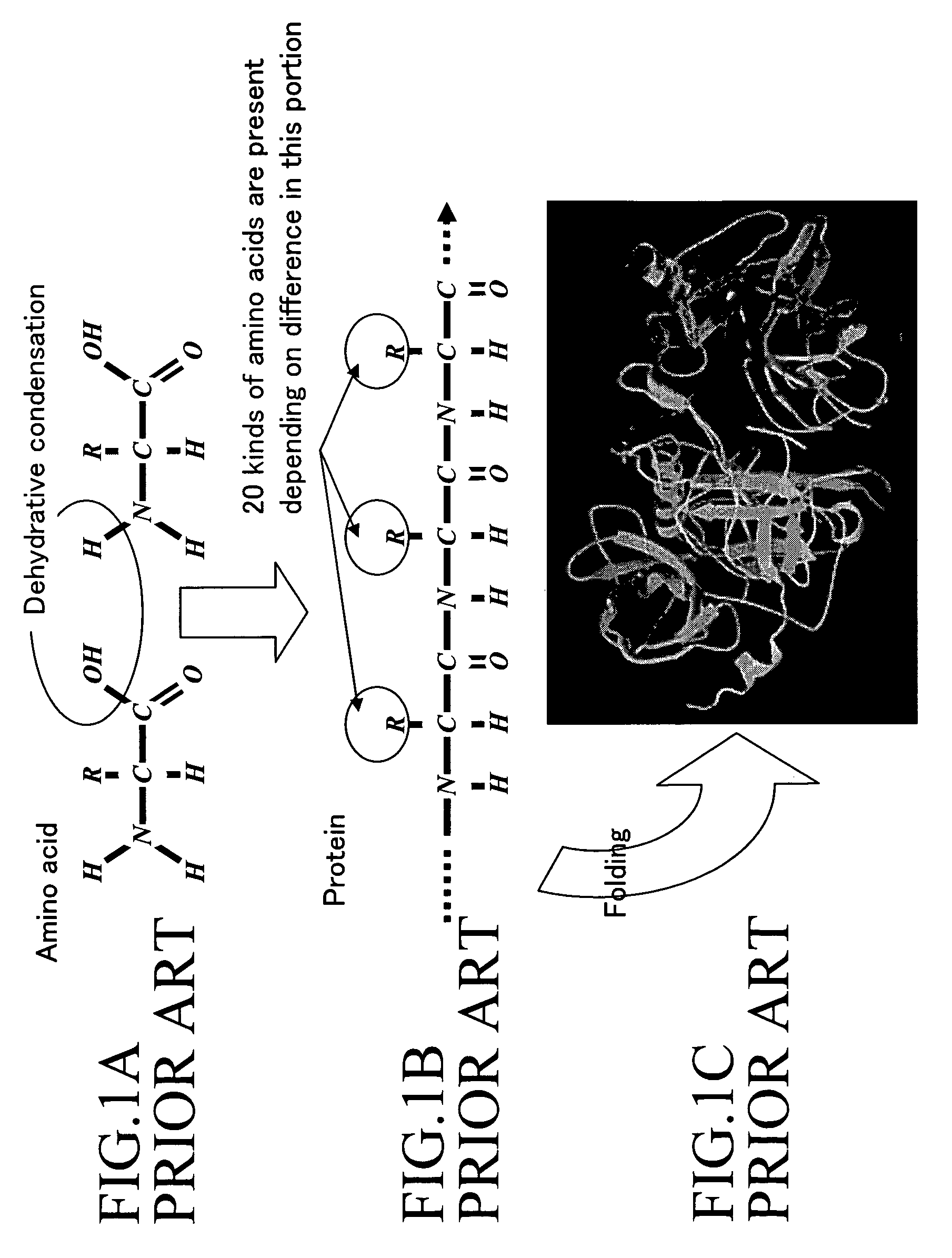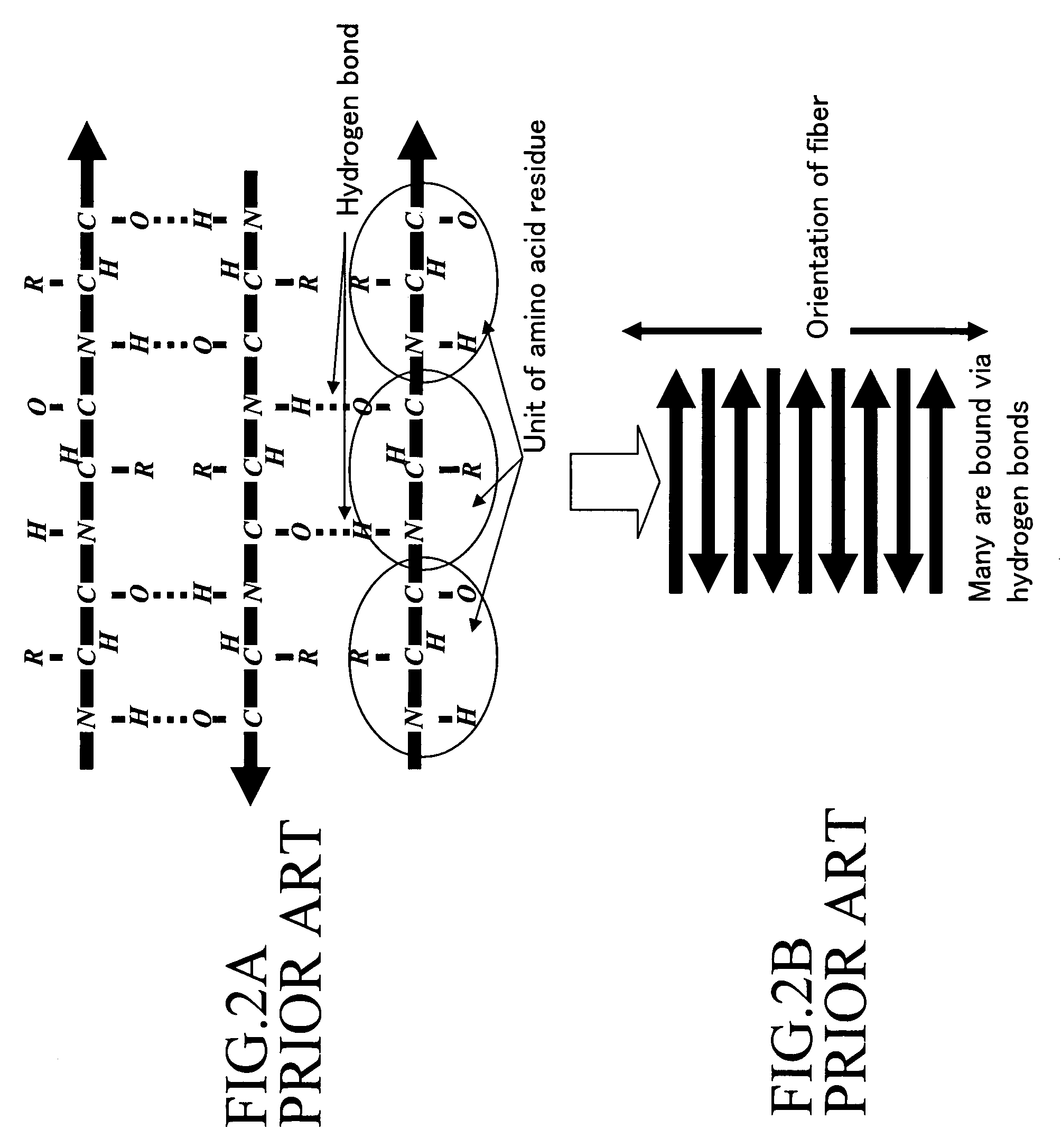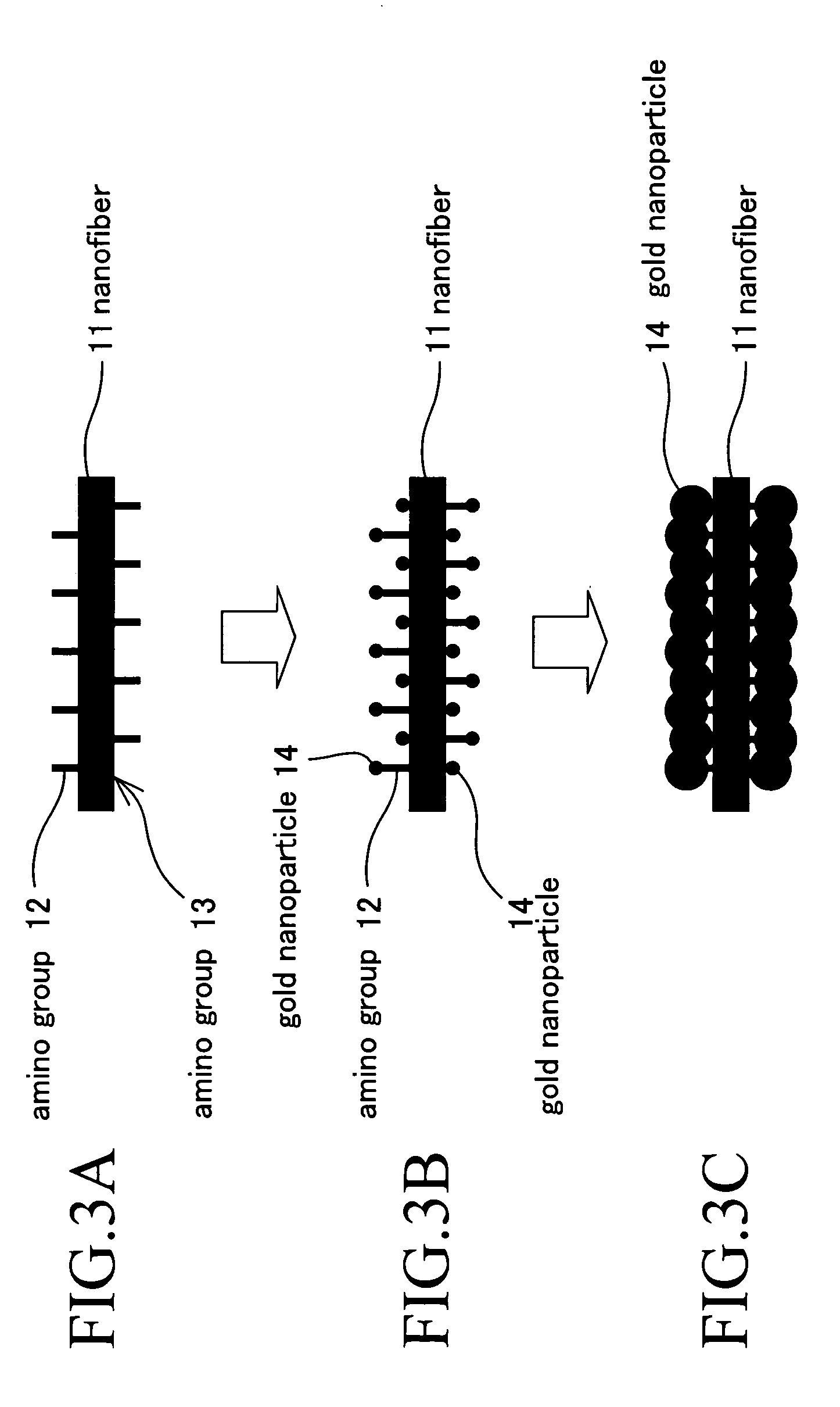Conductive peptide nanofiber and method of manufacture of the same
a technology of conductive peptides and nanofibers, which is applied in the direction of peptide sources, peptide/protein ingredients, and therapeutics. it can solve the problems of risk of disulfide bonding between cys and nanofibers, difficult design for imparting desired properties, and inability to obtain nanofibers with desired properties. it is advantageous in terms of synthesis efficiency and synthesis time, and achieves the effect of improving the efficiency of synthesis and synthesis
- Summary
- Abstract
- Description
- Claims
- Application Information
AI Technical Summary
Benefits of technology
Problems solved by technology
Method used
Image
Examples
examples
[0052]In this Example, the amino acid sequence of a peptide nanofiber to which a conductive function was imparted is Glu-Phe-Ile-Val-Ile-Phe-Lys (SEQ ID NO: 2), the abbreviation of which herein being EK7aa.
[0053](Experimental Method)
[0054]1. Synthesis of Peptide
[0055]Synthesis of peptide was conducted based on solid phase synthesis with a peptide synthesis system (Pioneer; Applied Biosystems). Support resin used in the solid phase synthesis was a PEG-PS resin (Applied Biosystems) to which: a 9-fluorenylmethoxycarbonyl (Fmoc) protecting group was added for protecting the Nα-amino group; a t-butoxycarbonyl (tBoc) protecting group was added for protecting the lysine residue side chain; and a t-butoxy (OtBu) protecting group was added for protecting the glutamic acid side chain. For coupling of the amino acid, an amino acid to which the protecting group was introduced (Peptide Institute, Inc.) was used, while N-[(dimethylamino)-1H-1,2,3-triazole[4,5-6]pyridin-1-ylmet hylene]-N-methylmet...
PUM
| Property | Measurement | Unit |
|---|---|---|
| diameter | aaaaa | aaaaa |
| diameter | aaaaa | aaaaa |
| temperature | aaaaa | aaaaa |
Abstract
Description
Claims
Application Information
 Login to View More
Login to View More - R&D
- Intellectual Property
- Life Sciences
- Materials
- Tech Scout
- Unparalleled Data Quality
- Higher Quality Content
- 60% Fewer Hallucinations
Browse by: Latest US Patents, China's latest patents, Technical Efficacy Thesaurus, Application Domain, Technology Topic, Popular Technical Reports.
© 2025 PatSnap. All rights reserved.Legal|Privacy policy|Modern Slavery Act Transparency Statement|Sitemap|About US| Contact US: help@patsnap.com



